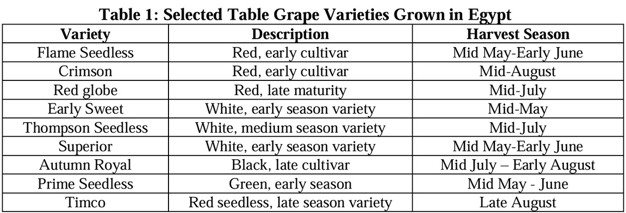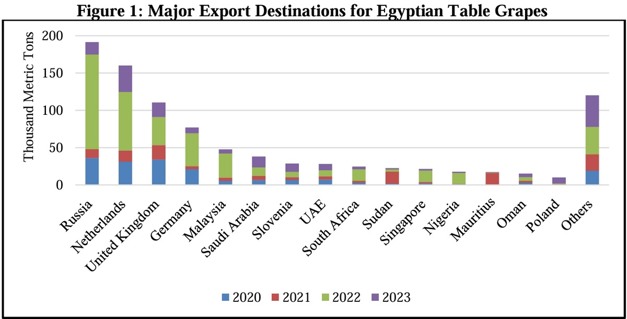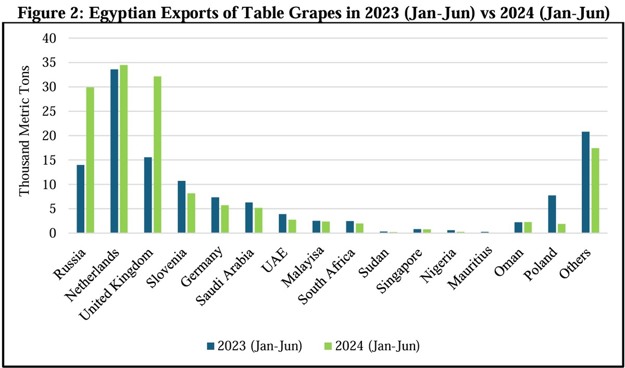Egyptian table grape production is forecast to increase to 1.59 million metric tons (MMT) in marketing year (MY) 2024/25 (October 2024 through September 2025). Egyptian exports of table grapes are forecast up by 5.7 percent (185,000 MT) due to new varieties which have improved production and quality. Furthermore, as a result of the August 12, 2024 Official Statement from Egypt's Central Administration for Plant Quarantine (CAPQ), it has made a considerable contribution to both production and trade.
Production
Egyptian table grape production is forecast at 1.59 MMT in MY 2024/25, an increase of 20,000 MT over the previous marketing year. This is primarily due to an increase in harvested area (an additional 1,000 hectares (HA)), as new table grape varieties have been introduced, improved cultivation practices (via drip irrigation and protected cultivation) have improved the quality of fruit. As such, it has led to an improvement in total soluble solids (TSS) as well.
Grapes are one of the most widely grown fruits in the country, second only to citrus, and are spread across the country from north to south. Harvest season in Egypt for early grape varieties begins in late May and ends in September, while harvest for late varieties begins in late June and ends in November.
Egyptian agriculture in the Nile Delta is dominated by small-scale farming in what is known as the "Old Land," which is characterized by using traditional practices in cultivation and flood surface irrigation. The "New Land" are lands that have been reclaimed relatively recently. New Lands cover over 2.5 million acres, using the latest technologies in irrigation, and are mostly devoted to export markets.
Planting and harvesting dates for Egyptian table grapes:
The Egyptian climate is optimal for table grape production. The mild winters, hot summers, and the high number of frost-free, warm growing days across the year, provide optimal conditions for grapevines during the season. The 2024 climate season for table grapes contributed to a very high quality of both white and red grape varieties in terms of size, weight, and color. However, excessive heat and drought remain concerns for table grape producers.
Planting season begins the first week of February when cuttings are planted in black polyethylene bags, filled with a mixture of peat moss and sand, and stored in greenhouses before the seedlings are transferred into the open field. The vines start fruiting in their third year.
To read the full report, click here.
For more information:
USDA
Tel: +1 (202) 720-2791
Email: [email protected]
www.usda.gov













